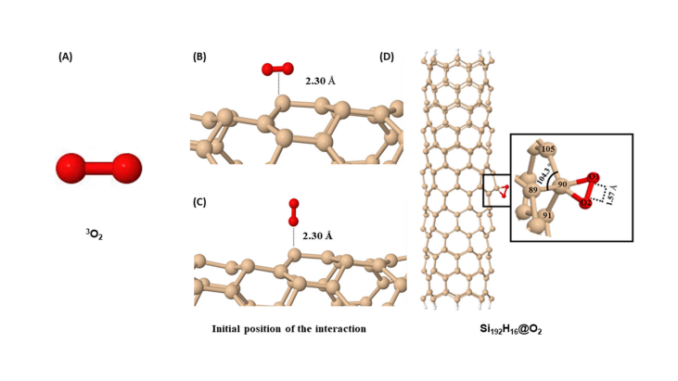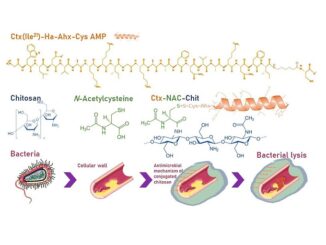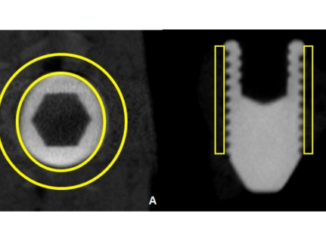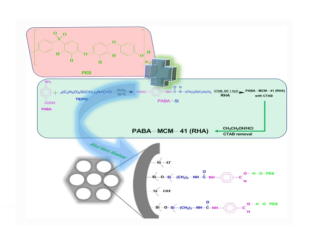
Single-walled silicon nanotube as an exceptional candidate to eliminate SARS-CoV-2: a theoretical study
Abstract: In this work, computational chemistry methods were used to study a silicon nanotube (Si192H16) as possible virucidal activity against SARS-CoV-2. This virus is responsible for the COVID-19 disease. DFT calculations showed that the structural parameters of the Si192H16 nanotube are in agreement with the theoretical/experimental parameters reported in the literature. The low energy gap value (0.29 eV) shows that this nanotube is a semiconductor and exhibits high reactivity. For nanomaterials to be used as virucides, they need to have high reactivity and high inhibition constant values. Therefore, the adsorption of 3O2 and H2O on the surface of Si192H16 (Si192H16@O2-H2O) was performed. In this process, the formation and activation energies were −51.63 and 16.62 kcal/mol, respectively. Molecular docking calculations showed that the Si192H16 and Si192H16@O2H-OH nanotubes bind favorably on the receptor-binding domain of the SARS-CoV-2 spike protein with binding energy of −11.83 (Ki = 2.13 nM) and −11.13 (Ki = 6.99 nM) kcal/mol, respectively. Overall, the results obtained herein indicate that the Si192H16 nanotube is a potential candidate to be used against COVID-19 from reactivity process and/or steric impediment in the S-protein.
Author(s): Mendonça, P.S.S.; Santos, J.R.; Oliveira, O.V.; Santos, J.D.; Longo, Elson
Journal of Biomolecular Structure and Dynamics
Published online: 26 Feb 2022
DOI: https://doi.org/10.1080/07391102.2022.2045220
CDMF
The CDMF, hosted at the Federal University of São Carlos (UFSCar), is one of the Research, Innovation and Dissemination Centers (RIDC) supported by the São Paulo State Research Support Foundation (Fapesp), and also receives investment from the National Council Scientific and Technological Development (CNPq), from the National Institute of Science and Technology of Materials in Nanotechnology (INCTMN).




